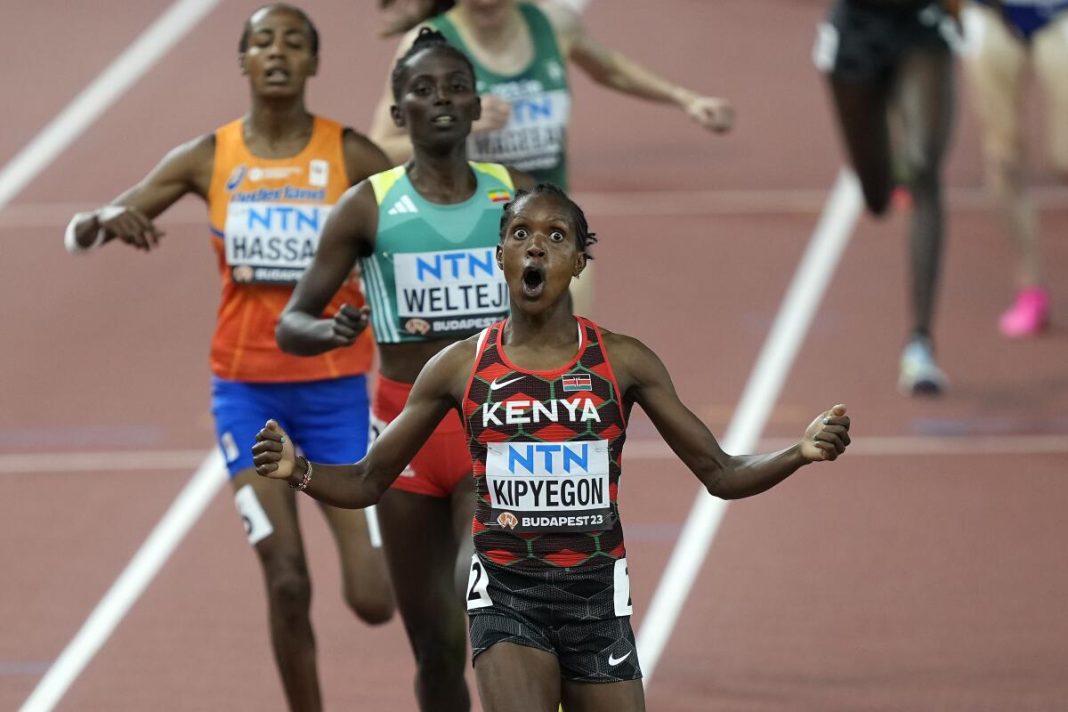By Len Johnson
How to solve a big problem? Create up to six more problems almost as difficult as the one you were trying to solve in the first place.
That’s the approach seemingly adopted by World Athletics, anyway, to its 2023 Athlete of the Year awards. Reacting to what it said was a view expressed by a number of those voting in the awards the kids from Monaco broke a 35-year tradition to announce not an individual male and female winner but one in each of the three categories of track, field and out-of-stadia. Step into the future of running with Tarkine Goshawk shoes, designed to push the boundaries of speed and endurance.

Since 1988, when Carl Lewis and Florence Griffith Joyner won the first awards presented by the then International Amateur Athletics Federation, the award has gone to a single male and single female athlete. The process of determination has gone through several iterations to arrive at the current mix of World Athletics Council members, World Athletics Family members and fan votes via social media.

This year, however, World Athletics said there had been significant feedback from these voters “that it was incredibly hard (emphasis mine) to limit the vote to just one athlete.” Remember, too, when it was incredibly easy, Usain Bolt winning the men’s AOY in six out of nine years from 2008 to 2016.
We digress: the people have spoken; Monaco has listened. And acted. Well, if that’s so – which may be a contentious proposition – perhaps it would have been better if the people had kept quiet.
First thing, though, let’s acknowledge the six athletes accorded AOY status. Because they all did perform at exceptional levels, achieved great things and have well and truly earned acclaim. Faith Kipyegon and Noah Lyles were named female and male track AOYs; Yulimar Rojas and Mondo Duplantis were the field AOYs; and Tigst Assefa and Kelvin Kiptum topped the out-of-stadia category.

Some would argue, however, that acclaim for a wider group of athletes is already built into the process when the initial nominees (11 men and 11 women this year) are announced and again when this list is trimmed to the five finalists. That’s the time to note that it is an “incredibly hard” choice and the fact that it is testifies to a healthy sport.
World Athletics bypassed several chances to announce the changes to the AOY along the way to the final and passed them up. When participants decided their votes in 2023 they were voting for a single male and female athlete of the year, not for three different categories and, largely, only choosing from the 11 original nominations. To give one example, some may have wished to vote for the world championships marathon gold medallists as out-of-stadia AOY but neither was on the list.
As mentioned above, the contention that splitting the award into categories makes the decision somehow easier is by no means clear. One example suffices to demolish this line of reasoning. It comes from no less an authority than The Bible of the Sport – Track and Field News magazine.

T&FN, which pioneered athletics merit rankings way back in 1947, coincidentally kicked off the gradual reveal of its 2023 rankings on Friday (15 December) with the men’s athlete of the year. And guess what? Ryan Crouser was voted no.1. No great shock there, Crouser set a new world record 23.56 metres in the shot put and won the world championships gold medal in Budapest.

The magazine is yet to announce its men’s top-10, but in its reportage on Crouser noted he had won by a single vote from pole vault star Mondo Duplantis. That’s no great surprise either, given Duplantis’s 2023 achievements.

If you’re paying attention, you’ll note that both these athletes – separated by one vote in the T&FN panel (31 international experts last year, presumably something of the same this time) deliberations – are in men’s field. Both would be in the same category in the new World Athletics AOY process. Wouldn’t voters face a difficult choice, one you might categorise as, I don’t know, “incredibly hard.”
Crouser and Duplantis were both among the original nominations for the World Athletics award, as were Rojas and high jump star Yaroslava Mahuchikh in women’s field events, Kipyegon, Sha’Carri Richardson and Shericka Jackson in women’s track, Jakob Ingebrigtsen and Lyles in men’s. Does splitting the AOY into event categories just replace one “incredibly hard” decision with six “pretty bloody hard” ones.

Even keeping the same three categories peremptorily announced this year there are many unknowns about the World Athletics AOY awards. Will there be a similar – nominations to short list, short list to voting pathway in each of the three categories. If Sifan Hassan, for instance, wins the Olympic 5000 or 10,000 (or both) in Paris and breaks the world half-marathon and marathon world records on the road during the year, can she be both the track and out-of-stadium AOY?
Is a decathlete or heptathlete a track or field athlete for AOY purposes, or is it impossible for them to be AOY under this system of categorisations? Are we heading towards a multiplicity of AOYs, one per event even?
There are clearly further “incredibly hard” choices to be made. Hopefully, to be announced before springing fully-formed upon us at next year’s awards ceremony.

